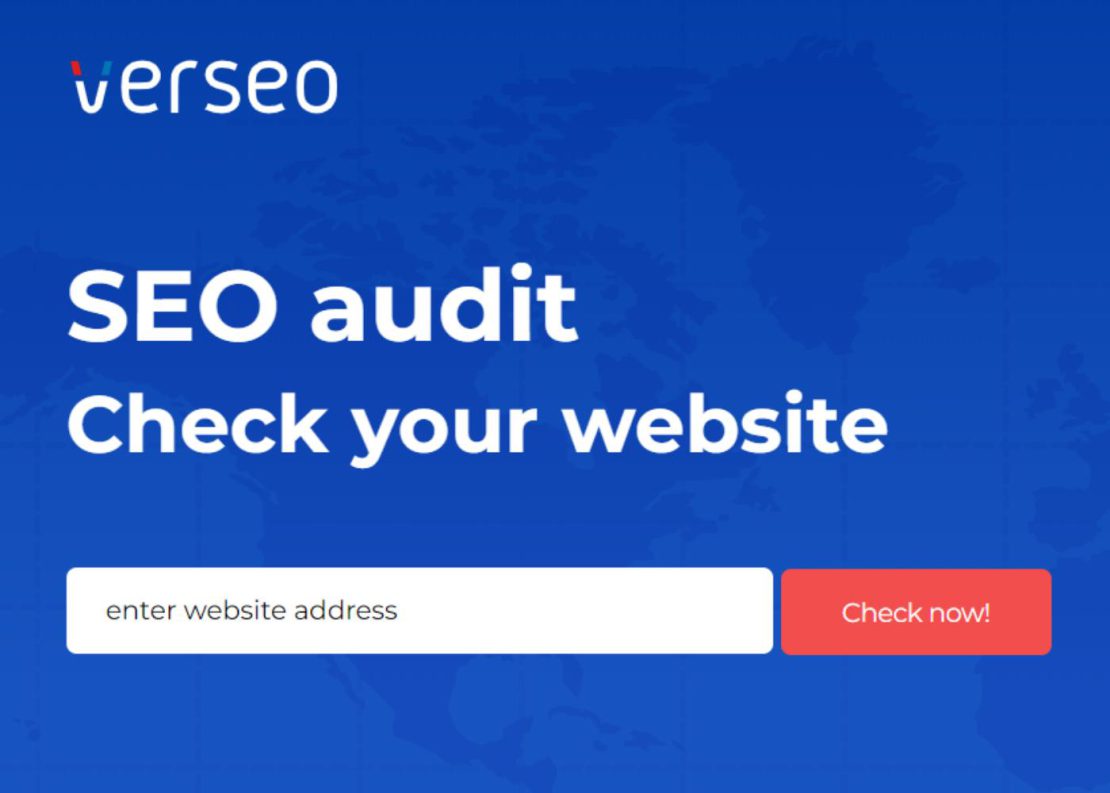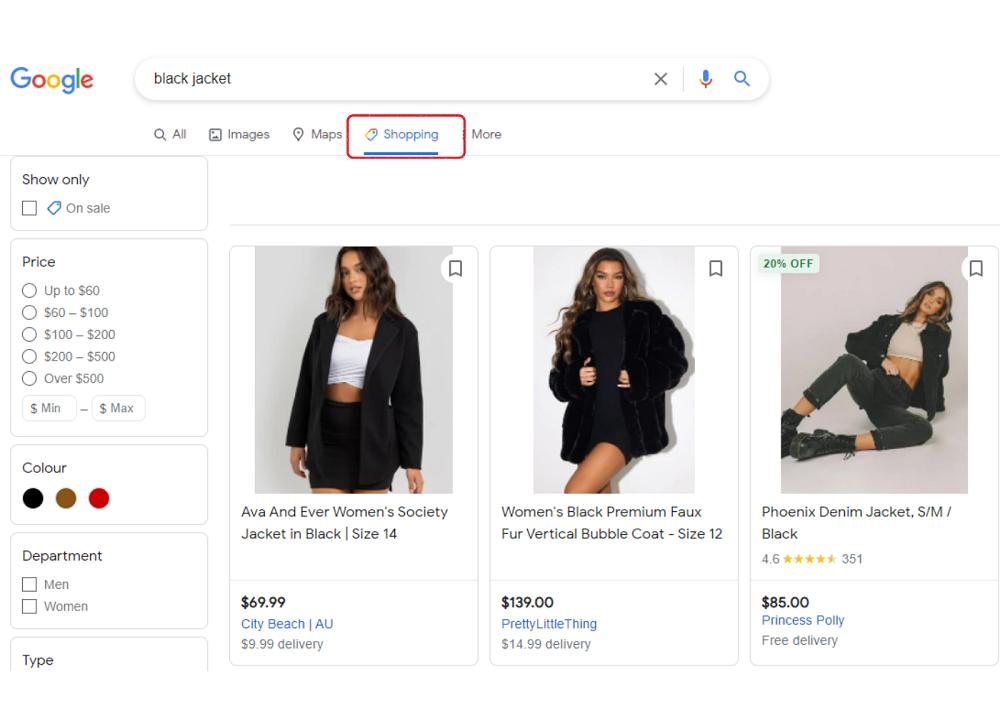Table of contents
Czytasz teraz:
Digital Marketing – How to Start Online Marketing Activities?
Close
In today’s world, no matter the industry, running a business without the possibilities offered by digital marketing is probably bound to fail. This applies not only to businesses oscillating around IT but also to those that until recently, could easily do without the Web.
Gastronomy, hairdressers, plumbers, car mechanics, physiotherapists, computer repair shops, interior designers, and companies from hundreds of other industries are slowly migrating to the online world every day. No matter the business model, in the vast majority of cases, this is no longer an option, but an obligatory market requirement, if you want to be among business leaders in a given industry
Digital Marketing Efforts Outrun Traditional Marketing
Offline marketing is everywhere – banners, TV advertisements, logos on t-shirts, and so on. And it works. But there’s no doubt – over the last few years consumers’ habits have fairly changed. Traditional marketing looks up to digital marketing. As a business owner, you ought to keep up with the massive growth of digital competencies of your target group – otherwise, you will lose your customers, both current and future ones. If you do open your digital doors to them, when the moment comes, they will start looking for services or products offered by your competitors. Your rivals and potential customers are already online. Are you? If not, you need a digital marketing strategy.
Digital marketing (also called online marketing), especially if you don’t have much experience in this field, can seem quite complex and demanding. In fact, promoting your brand online is an activity that requires a considerable amount of knowledge – even in the very beginning. Unfortunately, the necessity to broaden marketing horizons grows exponentially. It is also worth remembering that while some of the activities that make up the digital image of a brand can be conducted for free or with a low effort and budget, surely costs will increase over time.
(You will find the rest of the article below the form)
Contact us and get a free quote
We will analyze your business and prepare an individual price offer for the optimal marketing mix for you. Completely free.
Verseo spółka z ograniczoną odpowiedzialnością with its registered office in Poznań, at the following address ul. Węglowa 1/3, 62-122 Poznań is an administrator of your personal data.
About Verseo
Company’s office is located in Poznań. Company is entered into the register of entrepreneurs, kept by the District Court of Poznań – Nowe Miasto i Wilda in Poznań, 8th Commercial Division of the National Court Division under number 0000596164, NIP (Tax Identification Number): 7773257986. You can contact us by writing a letter on the address indicated above or e-mail:[email protected]
You have right to:
- access to your personal data,
- correct your personal data,
- demand to remove your personal data,
- restrain to process your personal data,
- object of process your personal data,
- transfer your personal data,
- withdraw consent.
If you think we process your personal data not in accordance with the law, you have right to object to supervisory authority – President of Personal Data Protection Office.
We process your personal data to:
- handle your question, based on art. 6 ust. 1 lit. 6 of General Data Protection Regulation
- promote our goods and services including ourselves in connection with your consent, based on art. 6 ust. 1 lit. a of General Data Protection Regulation
- protect or claim in connection with our reasonable interest, based on art. 6 ust. 1 lit. f General Data Protection Regulation
You share your personal data freely. Please remember that without sharing your personal data you will not be able to send us a message, and we will not be able to answer you.
We can share your personal data with trusted recipient:
- providers of tools made for: website analytics, marketing automation,
- hosting operators.
We will process your personal data by the time:
- which is necessary to achieve a specific purpose for which they were collected and after this term by the time which is necessary to protect or possible claim,
- of withdraw your permission .
We don’t process personal data in a way, which would involve making only automated decisions about you. More information about processing of personal data you can find in our privacy policy.
A Successful Business Needs To Send Marketing Messages Online
How to start digital marketing? Which marketing tools to use? Which of them are necessary at the beginning, and which can be put on a shelf and wait some time? Which should be taken into account when creating a digital marketing strategy? Firstly, you need to prepare a plan – a digital marketing plan.
SEO (Search Engine Optimization) – be visible on search engine results pages!
Every brand should have its website. With your own piece of the Web, you can provide customers with basic information about your services or products and, above all, let the clients find you. A well-designed website will allow you to make the first impression and provide the necessary contact details. A brand’s website, as a rule, should be eye-catching, esthetic, fast, and adapted to User Experience standards (more about UX later in the text).
However, in order for the website to be properly visible in the search engines like Google or Bing, it is important to begin activities focused on website positioning. When a user enters certain keywords that interest him/her, a search engine returns a list of several dozen or several hundred thousand results in a specific order. This ranking is not random-generated, and the constantly evolving Google algorithm constantly analyses billions of websites to arrange the results. However, you can live in harmony with the algorithm and use good SEO (Search Engine Optimization) practices from the very beginning. It will pay off, and getting top positions in search engines is usually one of the most important goals in digital marketing.
In general, the positioning of websites (no matter if it is a website focused on services, content, e-commerce – online store, or anything else) can be divided into two categories. One of them covers modifications on the website – this process is sometimes called on-site SEO. The range of activities mostly consists of creating and optimizing the content as well as a website’s code – the goal is to make the website “easy-to-digest” both for the user, and for search engine crawlers.
It also means enriching the content with proper keywords that you want to associate your website with. After choosing keywords based on extensive keyword research, you should place them in an article or other pieces of content. But remember – the text must be something more than simply keywords. Overfilling the content looks unnatural and decreases the quality of the text – a vast majority of readers will just sigh and exit your page.
If you have some subpages and feel like there is not much space for additional content, setting up a business blog can be beneficial. This will allow not only to increase the amount of content but also to present the brand as an expert in a given industry. Apart from expert articles uncovering some interesting data or tips and tricks of your trade, a company blog is a perfect place to brag about your brand’s achievements, present your coworkers to the audience and show off your company culture.
On-site SEO focuses also on improving technical issues:
- Decreasing website loading time – most users simply resign from entering a website if the loading time is too long. Accelerating loading can be achieved by e.g. images compression, code minification, migrating a website to a faster hosting, etc.;
- Taking care of proper website responsiveness, i.e. adaptation to display on screens of different resolutions (most of the digital traffic is generated via smartphones, which requires the use of other web development solutions than in the case of typical desktop versions – users of desktop and laptop computers, however, cannot be forgotten. And tablets, don’t forget the tablets);
- Implementation of SSL certificate in order to provide encrypted communication between the server and the user. It is also taken into account by Google bots while analyzing a website;
- And many more.
The second (but by no means less important) part of SEO is getting links leading to your website, which is referred to by the term off-site SEO. It is the links that alarm the Google crawler that, according to the social proof of rightness, the website is probably valuable and the algorithm can raise its position in the search results.
Why Should You Include SEO in Your Digital Marketing Strategy?
In the initial stage, the key information about SEO is the fact that website positioning is a long-term process. Achieving satisfying results is not possible in a week, month, and often even a year – it requires creating a brand positioning plan and its proper implementation, adapting to the constant algorithm updates, and continuous training. What’s worse, once the results are achieved, they are very easy to lose, for example, due to a faulty website update, which, for example, will cause problems with indexing individual subpages.
SEO Audit
If you already have your brand’s website, it is worth checking how it is doing in the search engines and what can be done to improve its positioning. It can be done thanks to an SEO audit, with such an audit you can check both the elements that can be improved on the site itself (on-site SEO) and the link profile (off-site SEO).
On the digital market, you can find many marketing tools – both free and paid – that can automatically collect basic information on this topic. At Verseo, we have also prepared the possibility of conducting such a quick audit at seoaudit.verseoads.com. You may also find the official Google PageSpeed Insights useful. It is one of the digital tools, which checks the loading speed and other basic elements that make up the performance of your website.

Automatic SEO auditors and all the tools that are based on similar scripts can be a good first step to website positioning as a set of basic information. However, such tools can’t give you fully personalized data and analyze more than just elemental issues. If you think of “proper SEO”, you won’t get far without a professional audit conducted by an experienced SEO specialist. Only multifaceted analysis allows you to create a detailed SEO strategy, which in the vast majority of cases (except for extremely niche market sectors) is necessary to bring the website to successful results and the top position in SERPs.
Google My Business
When a potential client enters a brand’s name into Google, on the right side, next to the search results, a section with data about a specific company appears. Setting up such a business card is free of cost, so you can display the most important data – phone number, address, business hours, or photos of the office. With Google My Business, the user has access to basic data without searching further, and you can make the right first impression. And that’s the clue of digital marketing.
Social Media Marketing
Social media can be compared to the center of big cities. Depending on the current popularity of a given portal, it can be flourishing (like Instagram or TikTok) or abandoned (like MySpace). There is no doubt, however, that the presence on social media will be useful for the vast majority of brands. Social media are perfect platforms to get in touch with the client. Via Facebook or other platforms you cannot only make announcements (“Hi, I am a given brand)”, but also attract attention (“Oh, maybe it’s worth starting a dialogue?”).

Which Social Media Channels Should You Choose?
The first question to be answered when considering setting up a brand account on social media is “which digital platforms gather my target audience?”. Each website is characterized by a slightly different user profile – due to the position that Facebook built up over the years, theoretically, you will find all age groups there, but Instagram and TikTok reach younger users much more effectively and accurately. Each platform has its own communication code – Instagram is an image-based platform, TikTok consists of short videos, and Twitter is primarily based on 280-character text messages.
Think about which social media platform fits your brand best. A dynamic brand aimed at teenagers can make miracles on TikTok, while in the case of care products for seniors, the presence there will probably end up in business terms as a waste of time and resources.
Almost every medium and big brand promote its products/services on social media platforms. This is a huge overload of information for the user. Due to this accumulation in social media, the company should stand out – don’t use boring narratives, based on clichés. You have only a split second to catch the eye of potential customers – don’t waste it.
Social media marketing is also one of the best digital channels to use the potential of influencer marketing – most influencers have profiles with a massive following – maybe it’s worth saying hello to their target audience and making a business collaboration?
Social Media Marketing Is No Longer Organic
It is worth noting that the era of organic reach (e.g. a reach and traffic achieved without the support of PPC – paid social media ads) is gone forever. Social media managers are certain – your Facebook fan page will not be displayed to all users who once clicked “like it” and hope that it will allow them to get updates about new posts. Social media platforms are monetizing their activities and focus mostly on paid advertising. For this reason, it is worth allocating part of the budget to paid digital ads – otherwise, it can be a waste of time for content creators if their social media posts are seen by only a dozen or several dozen people. Of course, you can aim for a jackpot and count that your digital communication on social media goes viral – the holy grail of digital marketers. Most likely, it won’t happen.
Google Ads – PPC Marketing Campaigns
Google Ads is a massive advertising system, allowing your brand to reach millions of people.
Google Ads allows you to show paid ads:
In search results – above and below the organic results. This location guarantees proper exposure of the ad and is usually associated with clicks. An advertisement placed especially at the very top of SERPs, although marked as an ad, is sometimes confused with a traditionally positioned page.
On YouTube – the largest video platform in the world is also an excellent place for displaying ads. Ads can be shown during and after videos (as video ads), as well as text overlay ads. The system also allows the use of several other formats (e.g. it can display ads at the top of the column with suggestions for movies to watch).
On millions of portals associated with the Google Display Network. With GDN, you can display ads on many lifestyles, news, or journalistic websites – the network gathers both small blogs run by hobbyists and large horizontal portals. Furthermore, your ads can be shown only to specific users – those who, for example, have previously visited your website or expressed interest in similar products. This is a great way to remind customers about your brand.
In Discovery Ads. This format is based on a set of assets that, based on self-learning algorithms, the system dynamically mixes. This way AI selects a creation that will generate the best results in a given location and under given conditions. Discovery Ads are shown on a Discover card, in Gmail (in the tab “offer” and “network”) and on YouTube (on a YouTube’s homepage and in the “worth watching” panel).
In Google Shopping. You can find a price comparison platform (called Google CSS – Comparison Shopping Services) in the “Shopping” tab of the search results page. But you can also advertise specific products there – ads will be shown over the organic search results. What’s important is, product listing ads can also appear in traditional SERPs – when a user enters a phrase in Google that is related to a product (for example, a drone or a leather jacket), Google Ads may display an ad for your product with an image, name, price and, of course, a link to the store’s website.

And it is not the full potential of Google Ads!
What else it’s worth knowing about Google Ads? Apart from impressive reach, this system is characterized by advanced targeting possibilities. Unlike a TV spot, you can precisely specify to whom the ad is to be displayed, which prevents the budget from burning. Google Ads also enables dynamic adjustment of the target group based on the collected data – it can rotate ads in real-time to people who, according to the system, are the best prospects for conversion – target customers. Supportive solutions such as VCM are also available, which adjust the data 24/7 thanks to self-learning algorithms.
Remember – to take full advantage of Google Ads, the system must have something to collect data on. It is a solution that pays off, but it’s getting more effective the more data it has – which requires you to spend money.
In fact, both SEO and digital marketing campaigns (as well as setting up a Google My Company card) can be classified as search engine marketing in a broader view.
How To Begin Digital Marketing Activities?
The aforementioned digital marketing channels can be a good start for a brand on its journey with online marketing. Of course, this is only the beginning – digital marketing offers basically endless possibilities and digital channels. In the digital business plan, the key is to choose the right digital marketing channels and make sure that communication is consistent.
Conduct market research, prepare a digital strategy, implement it and see how your marketing efforts pay off. You can also trust Verseo – an experienced digital marketing agency and let us boost your business!












